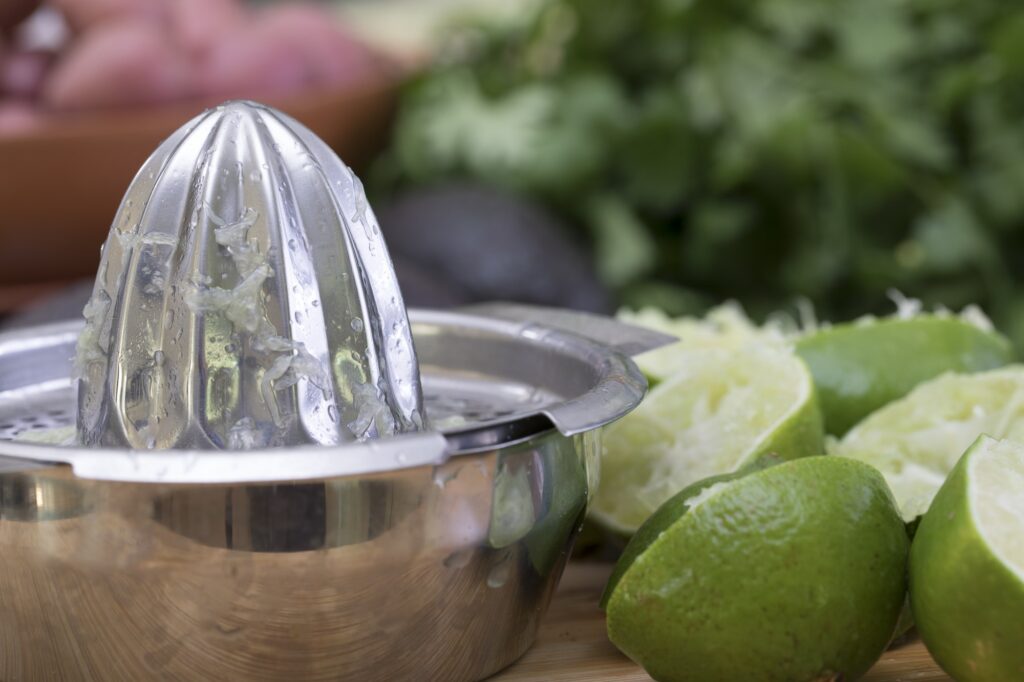19 Fun Facts About Limes

Introduction
Part of the citrus family which also includes lemons, oranges, and grapefruit, limes have a uniquely tart and acidic taste. Their sour juice and zesty peel are staples in cuisines around the world from Mexican tacos to Thai curries to Cuban mojitos.
Though often confused with lemons, limes are actually quite different – smaller, more spherical, and with a stronger, more fragrant aroma. The two most common varieties are Persian or Tahitian limes, and the smaller, sweeter key limes.
| Nutrient | Amount Per 1 Lime (67g) |
|---|---|
| Calories | 20 |
| Carbohydrates | 7.1g |
| Fiber | 1.9g |
| Sugars | 1.1g |
| Protein | 0.5g |
| Fat | 0.1g |
| Vitamin C | 32% DV |
| Calcium | 22mg |
| Potassium | 68mg |
- Nutrition data is sourced from the USDA FoodData Central database1.
- Serving size is 1 lime approximately 2″ in diameter and weighing 67g.
- Percent Daily Values (%DV) are based on a 2000-calorie diet.
From their vitamin C content to their many uses in food and drink, limes have a lot to offer. Read on for 19 fun facts that will have you looking at this unassuming little fruit in a new light!
Fun Facts About Limes

1. Limes are packed with vitamin C
Just one lime can provide up to 32% of your recommended vitamin C intake. This vital nutrient acts as an antioxidant, protecting cells from damage, and also boosts immunity2.
2. They originated in Southeast Asia
The first limes originated in Southeast Asia, with the earliest recordings of cultivation in Malaysia and Indonesia dating back to the 15th century.
3. There are many different varieties

From Key limes to Makrut limes (Kaffir lime)3 to Rangpurs, there are over 50 varieties of this zesty **citrus fruit. They range dramatically in size, shape, color, and flavor.
4. They can help aid in digestion
The high acidity and vitamin C content in limes make them a digestive aid, helping to stimulate digestive juices. A glass of hot water with lime juice is a popular morning ritual in India.
5. Lime juice can disinfect cuts

Thanks to the acidity, vitamin C, and antioxidants, lime juice has natural disinfectant and antibacterial properties. In a pinch, it can be used to clean and disinfect small cuts and scrapes.
6. They were used historically to prevent scurvy
The high levels of vitamin C were essential for British sailors out at sea for long stretches. Without access to fresh fruits and vegetables, many suffered from scurvy until limes and other citrus fruits became a dietary staple.
7. Key limes are smaller and sweeter
While Persian limes are the most widely available, key limes are smaller, seedier, and have a higher sugar content making them sweeter. Key lime pie is a beloved dessert made famous by this tiny green fruit.
8. They grow in clusters

Unlike other citrus fruits that grow singly or in pairs, limes grow in bunches, with up to ten fruits growing together.
9. The juice can help with weight loss
With only 20 calories per lime, the juice is low in calories and high in metabolism-boosting vitamin C. This makes it a smart, low-calorie addition to a healthy diet.
10. Limes enhance the flavor of seafood
The bright, tart flavor of limes perfectly complements fish, shrimp, and other types of seafood This flavor pairing is popular in cuisines around the world including ceviche in Latin America and fish amok in Cambodia.
11. They last up to 2 weeks refrigerated

Fresh limes can be stored at room temperature for up to one week. For maximum freshness, store them refrigerated which they will keep for 10-14 days.
12. Lime essential oil has many uses
Extracted from the rind, lime essential oil is popular in aromatherapy and natural beauty products. It has an energizing citrusy aroma that is said to boost mood.
13. There are many lime-flavored foods and drinks

From key lime pie to lime soda to lime yogurt, lime sherbet, and beyond, manufacturers love to use natural and artificial lime flavoring to put a citrusy twist on foods and beverages.
14. They are a key ingredient in many cocktails
What would a mojito or margarita be without the bright pop of lime? The juice is a staple ingredient in iconic cocktails like the gin and tonic or caipirinha.
15. Limes symbolize hospitality in India
In Indian culture, serving lime water to guests is a sign of hospitality. It also has a practical purpose, with vitamin C helping travelers avoid stomach issues from unclean water.
16. The leaves are used in Southeast Asian cuisine
The aromatic leaves and rind of the Makrut lime plant are used to flavor dishes across Southeast Asia from Vietnam to Thailand. Known as kaffir lime leaves, they lend a wonderfully intense citrus fragrance.
17. Mexico is the leading producer of limes

Mexico produces around 2.3 million tons of limes (and lemon) per year4, making it the largest global producer.
Key limes make up 80% of Mexico’s lime production and per capita consumption is around 7.2 kg per yea
18. Lime trees have fragrant blossoms
Not only do lime trees produce the handy green fruit, but their blossoms also produce a lovely citrusy floral scent used in perfumes and aromatherapy products.
19. Limes symbolize renewal and fresh starts
In many cultures, the bright green color and tangy flavor represent renewal, freshness, clarity, and new beginnings. Foods and drinks flavored with lime are often served at the Persian New Year festival, Nowruz.

FAQ
What is the nutritional value of limes?
Limes are a rich source of vitamin C, with one lime providing up to 32% of the recommended daily intake. They also contain other nutrients such as calcium and potassium in smaller amounts and are low in calories, making them a healthy addition to any diet.
Where do limes originally come from?
Limes have their origins in Southeast Asia, with the earliest known cultivation occurring in Malaysia and Indonesia around the 15th century. They have since spread worldwide, with numerous varieties adapted to different climates.
Can lime juice really disinfect cuts?
Yes, lime juice has natural disinfectant and antibacterial properties due to its acidity, vitamin C, and antioxidants. It can be used to clean and disinfect small cuts and scrapes, but it is not a substitute for professional medical treatment.
How should limes be stored to maximize their shelf life?
To keep limes fresh, they can be stored at room temperature for up to a week, but for longer shelf life, they should be refrigerated. In the fridge, limes can last between 10 to 14 days.
Why are limes important in cultural traditions, such as in India?
Limes hold cultural significance in places like India, where they symbolize hospitality. Serving lime water to guests is a welcoming gesture, and the vitamin C in limes is believed to help prevent stomach issues, which is especially beneficial for travelers.
Conclusion
Though small, limes pack a lot of flavor and versatility. These fun facts show just how fascinating the history, varieties, and uses of limes truly are. Whether served in a drink, squeezed over fish tacos, or candied into a sweet dessert, this little green citrus fruit is an invaluable cooking staple.
So the next time you enjoy a dish with a lime garnish, think about how it got there! From their origins in Asia to their essential role in preventing scurvy, this humble fruit has come a long way.
- Limes, raw, https://fdc.nal.usda.gov/fdc-app.html#/food-details/168155/nutrients [↩]
- Everything you need to know about limes, medicalnewstoday.com [↩]
- https://en.wikipedia.org/wiki/Kaffir_lime [↩]
- https://apps.fas.usda.gov/psdonline/circulars/citrus.pdf [↩]





